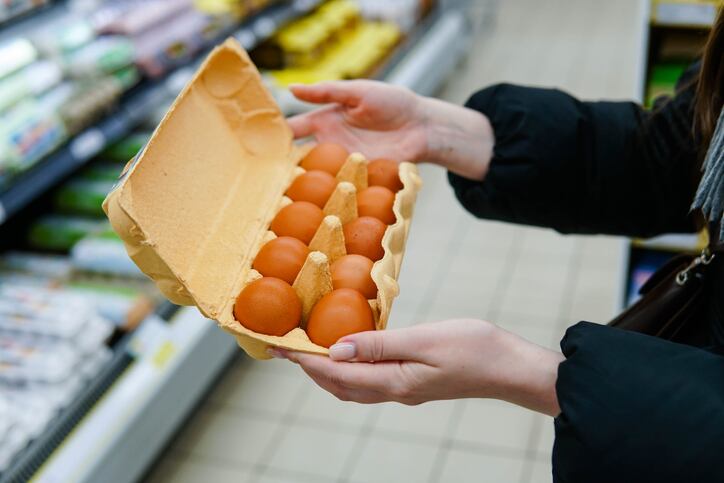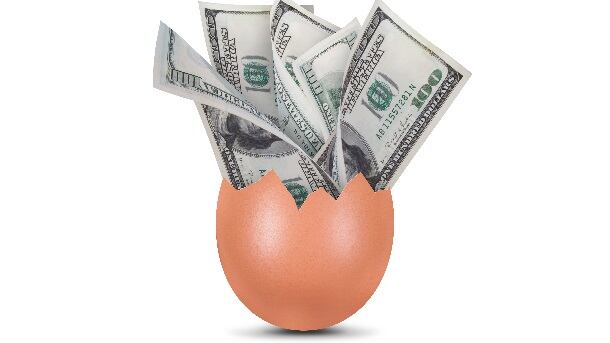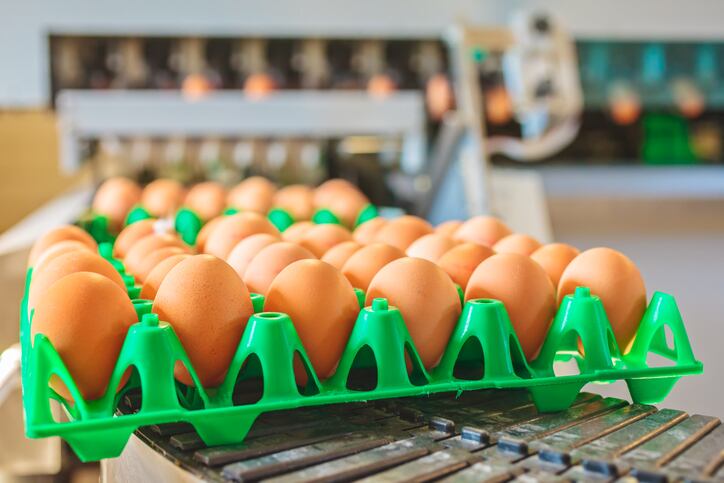The company reported yesterday that in the 12 weeks ending Dec. 2, its net sales fell 34.7% to $523.2m compared to $801.7m for the same period last year, during which egg prices skyrocketed along with inflation due to limited supply and increased demand.
In the company’s second quarter, the net average selling price per dozen conventional eggs was $1.46 – down 49.4% from the same period last year when they sold for $2.88. The decline for specialty eggs was less severe, dropping 3.9% year-over-year to $2.77 per dozen from $2.37 per dozen, according to CFO Max Bowman.
As a result, Cal-Maine’s net income for the second quarter ell to $17.m, or 35 cents per diluted share, compared to $198.6m, or $4.07 per diluted share, which was about 62% below analyst expectations, according to FactSet.
The drop sent the company’s stock tumbling more than 5% in pre-market trading, which the Wall Street Journal notes is the company’s “worst day since Oct. 4, when [shares] fell 7.3%.”
CEO Sherman Miller tried to paint a rosier picture, characterizing the company’s performance in the quarter as “solid” given the dynamic market conditions and playing up a slight increase in volume.
“Our sales reflect a different market environment from a year ago, with significantly lower average selling prices. However, our total volumes sold were up slightly over a year ago, as consumer demand for shell eggs continued to be favorable in the quarter, especially leading up the Thanksgiving holiday,” he said in a statement.
He added that Cal-Maine remains focused on offering a “wide range of quality choices in shell eggs as well as enhanced egg production offerings,” which sets it apart from competitors and should set it up for future growth given rising consumer interest in cage-free, free-range and other specialty options.
“We remain focused on our strategy to invest in our operations to expand capacity; pursue synergistic acquisition opportunities; and support long-term growth through investment in innovative, scale-driven products and facilities. We are fortunate to have a strong balance sheet and a disciplined capital allocation strategy that supports our growth objectives,” Miller said.
Cal-Maine builds cage-free egg production capacity
To this end, the company recently announced that it will buy from Tyson Foods a recently closed broiler processing plant that it plans to repurpose for use in egg and egg product production, potentially including hard boiled eggs.
Related to that acquisition, the company plans to approach the farmers with which Tyson had agreements prior to the closure of the plant about producing additional specialty eggs for Cal-Maine.
In the second quarter, Cal-Maine also closed the purchase of assets from Fassio Egg Farms in Utah that will add production capacity for cage-free eggs.
The company’s investment in cage-free egg production could prove a savvy business move given current production in the US continues to fall short of demand. According to USDA, cage-free commitments as of December 2023 required 66.7bn cage-free eggs per year from an approximate cage-free flock of 221.4m hens, indicating a shortage of 116m hens from the current non-organic cage-free flock of 105.4m hens.
Avian flu hits Kansas facilities
Even as the company builds up production capacity of specialty eggs, it faces a significant reduction in table egg layer flocks due to an avian flu outbreak at its facilities in Kansas.
Cal-Maine reported it had to depopulate approximately 1.5m laying hens and 240,000 pullets, or approximately 3.3% of its total flock. But, it adds it believes it can mitigate the loss of production through flock rotation.




